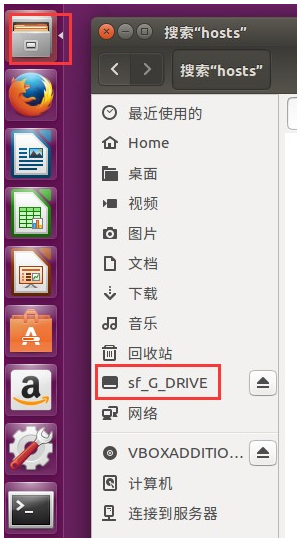原文地址:TCP/IP学习(30)——L2数据链路层的数据包处理详细流程 作者:GFree_Wind
本文的copyleft归gfree.wind@gmail.com所有,使用GPL发布,可以自由拷贝,转载。但转载请保持文档的完整性,注明原作者及原链接,严禁用于任何商业用途。
作者:gfree.wind@gmail.com
博客:linuxfocus.blog.chinaunix.net
作者:gfree.wind@gmail.com
博客:linuxfocus.blog.chinaunix.net
在前面的博文中,我学习了数据包从L2到L5的流程,但是当时因为时间和水平的限制,整个儿流程并没有涉及太多的细节。前两天大致又过了这个流程,发现有不少细节还是需要注意的。所以决定,将之前略过的一些内容,详细的学习一遍。
今天主要是学习L2数据链路层的数据包的处理机制。在Linux kernel中,由网卡驱动完成L1物理层和L2数据链路层的工作。
首先看函数net_dev_init
- static int __init net_dev_init(void)
- {
- int i, rc = -ENOMEM;
- BUG_ON(!dev_boot_phase);
/*
创建对应的/proc文件,如/proc/net/dev, /proc/net/softnet_stat等
*/
- if (dev_proc_init())
- goto out;
/* 初始化netdev对应的kobject*/
- if (netdev_kobject_init())
- goto out;
/*
初始化数据链路层的handle上层数据类型表。
回忆前文《TCP/IP学习(28)——数据包完整接受流程》中,在inet_init中注册了IP包类型到这个表中。
*/
- INIT_LIST_HEAD(&ptype_all);
- for (i = 0; i < PTYPE_HASH_SIZE; i++)
- INIT_LIST_HEAD(&ptype_base[i]);
/*
注册neddev_net_ops subsystem
*/
- if (register_pernet_subsys(&netdev_net_ops))
- goto out;
- /*
- * Initialise the packet receive queues.
- */
- /*
- 为每个CPU初始化PERCPU的全局变量softnet_data,作为该CPU的接收缓存
- */
- for_each_possible_cpu(i) {
- struct softnet_data *sd = &per_cpu(softnet_data, i);
- ...... ......
- }
- dev_boot_phase = 0;
- /* The loopback device is special if any other network devices
- * is present in a network namespace the loopback device must
- * be present. Since we now dynamically allocate and free the
- * loopback device ensure this invariant is maintained by
- * keeping the loopback device as the first device on the
- * list of network devices. Ensuring the loopback devices
- * is the first device that appears and the last network device
- * that disappears.
- */
- if (register_pernet_device(&loopback_net_ops))
- goto out;
- if (register_pernet_device(&default_device_ops))
- goto out;
/*
enable软中断
*/
- open_softirq(NET_TX_SOFTIRQ, net_tx_action);
- open_softirq(NET_RX_SOFTIRQ, net_rx_action);
- hotcpu_notifier(dev_cpu_callback, 0);
- dst_init();
- dev_mcast_init();
- rc = 0;
- out:
- return rc;
- }
net_dev_init在系统启动时,在注册网卡之前调用,主要就是初始化net device所需要的一些环境。
下面仍然以Intel PRO/1000的网卡驱动为例,e1000_init_module为该驱动的入口。通过e1000_init_module->pci_register_driver->e1000_probe进入初始化函数。
在e1000_probe中,通过下面这条语句绑定了操作函数。
netdev->netdev_ops = &e1000_netdev_ops;
- static const struct net_device_ops e1000_netdev_ops = {
- .ndo_open = e1000_open,
- ...... ......
- };
对于今天的主题来说,只需关心e1000_open即可。因为该函数是在激活该网卡时被调用,完成资源的申请,中断的注册,即e1000_intr。
- static irqreturn_t e1000_intr(int irq, void *data)
- {
- ...... ......
- /*
- 检测是否可以调度NAPI:
- 当没有disable NAPI且没有该网卡对应的NAPI在运行时(保证对应一个网卡的NAPI只有一个实例在运行),即可调度一个新的NAPI。
- NAPI是一种新的网卡数据检查处理方式。基本上是interrupt+poll。详细信息问google
- */
- if (likely(napi_schedule_prep(&adapter->napi))) {
- /*
- 清楚单次的统计信息。
- 刚看到这里时,我也奇怪,为什么total的统计信息要被清零。
- 实际上这些统计信息只是一次NAPI运行的统计信息,并不是网卡总的统计信息。
- 网卡的统计信息为netdev->stats。NAPI运行完会将下面的值加到网卡的统计信息上的。
- */
- adapter->total_tx_bytes = 0;
- adapter->total_tx_packets = 0;
- adapter->total_rx_bytes = 0;
- adapter->total_rx_packets = 0;
- /* 要求调度对应的NAPI实例 */
- __napi_schedule(&adapter->napi);
- } else {
- /* this really should not if it does it is basically a
- * bug, but not a hard error, so enable ints and continue */
- if (!test_bit(__E1000_DOWN, &adapter->flags))
- e1000_irq_enable(adapter);
- }
- return IRQ_HANDLED;
- }
上面为中断的关键流程,其中要求调度对应的NAPI实例时,实际上是引发一个软中断。
__raise_softirq_irqoff(NET_RX_SOFTIRQ)。这个中断函数的主要功能就是要求调度一个NAPI——这里跟以前理解的中断函数不太一样。按照教科书式的概念,网卡的中断函数,应该将数据包从网卡的缓冲中取出放到一个系统缓冲中,然后在引发软中断去做剩下的工作。
下面看
NET_RX_SOFTIRQ软中断对应的处理函数net_rx_action。
- static void net_rx_action(struct softirq_action *h)
- {
- struct softnet_data *sd = &__get_cpu_var(softnet_data);
- unsigned long time_limit = jiffies + 2;
- int budget = netdev_budget;
- void *have;
- local_irq_disable();
/* 开始顺序poll所有需要poll的网卡 */
- while (!list_empty(&sd->poll_list)) {
- struct napi_struct *n;
- int work, weight;
- /* If softirq window is exhuasted then punt.
- * Allow this to run for 2 jiffies since which will allow
- * an average latency of 1.5/HZ.
- */
- if (unlikely(budget <= 0 || time_after(jiffies, time_limit)))
- goto softnet_break;
- local_irq_enable();
- /* Even though interrupts have been re-enabled, this
- * access is safe because interrupts can only add new
- * entries to the tail of this list, and only ->poll()
- * calls can remove this head entry from the list.
- */
- /* 取得一个网卡的NAPI实例 */
- n = list_first_entry(&sd->poll_list, struct napi_struct, poll_list);
/* 给这个实例上锁 */
- have = netpoll_poll_lock(n);
- weight = n->weight;
- /* This NAPI_STATE_SCHED test is for avoiding a race
- * with netpoll's poll_napi(). Only the entity which
- * obtains the lock and sees NAPI_STATE_SCHED set will
- * actually make the ->poll() call. Therefore we avoid
- * accidently calling ->poll() when NAPI is not scheduled.
- */
- work = 0;
- if (test_bit(NAPI_STATE_SCHED, &n->state)) {
- /* poll这个网卡 */
- work = n->poll(n, weight);
- trace_napi_poll(n);
- }
- WARN_ON_ONCE(work > weight);
- budget -= work;
- local_irq_disable();
- /* Drivers must not modify the NAPI state if they
- * consume the entire weight. In such cases this code
- * still "owns" the NAPI instance and therefore can
- * move the instance around on the list at-will.
- */
- if (unlikely(work == weight)) {
- /* 该NAPI的weight消耗完毕,需要处理下一个 */
- if (unlikely(napi_disable_pending(n))) {
- local_irq_enable();
- napi_complete(n);
- local_irq_disable();
- } else
- list_move_tail(&n->poll_list, &sd->poll_list);
- }
- netpoll_poll_unlock(have);
- }
- out:
- net_rps_action_and_irq_enable(sd);
- #ifdef CONFIG_NET_DMA
- /*
- * There may not be any more sk_buffs coming right now, so push
- * any pending DMA copies to hardware
- */
- dma_issue_pending_all();
- #endif
- return;
- softnet_break:
- sd->time_squeeze++;
- __raise_softirq_irqoff(NET_RX_SOFTIRQ);
- goto out;
- }
通过上面这个软中断处理函数,对应每个网卡来说,又需要跳回驱动,去学习对应的poll函数。对于本文的这个驱动来说,poll函数就是e1000_clean->e1000_clean_rx_irq。这个函数是真正用于处理网卡接收数据包的工作。
- static bool e1000_clean_rx_irq(struct e1000_adapter *adapter,
- struct e1000_rx_ring *rx_ring,
- int *work_done, int work_to_do)
- {
- ...... ......
/* 得到当前需要处理buffer*/
- i = rx_ring->next_to_clean;
- rx_desc = E1000_RX_DESC(*rx_ring, i);
- buffer_info = &rx_ring->buffer_info[i];
- while (rx_desc->status & E1000_RXD_STAT_DD) {
- struct sk_buff *skb;
- u8 status;
- if (*work_done >= work_to_do) //如果已经poll到足够的包,可以跳出返回
- break;
- (*work_done)++;
- rmb(); /* read descriptor and rx_buffer_info after status DD */
/* 得到数据包buffer对应的skb buffer结构地址 */
- status = rx_desc->status;
- skb = buffer_info->skb;
- buffer_info->skb = NULL;
/*
然后做一些网卡硬件相关,及一些sanity check
*/
...... ......
- /*
- 设置skb->pkt_type:PACKET_BROADCAST等;
- 即数据链路层协议类型
- */
- skb->protocol = eth_type_trans(skb, netdev);
/* 将数据包传递给上层,并做一些通用数据链路层的处理 */
- e1000_receive_skb(adapter, status, rx_desc->special, skb);
- next_desc:
- /* 处理下一个数据包 */
- ...... ......
- }
/* 更新统计信息等*/
- ...... ......
- return cleaned;
- }
在这个函数中,真正的从网卡buffer中取出数据包,然后根据硬件的特性做一些特定处理,并简单的设置了数据包的一些field,完成L1的操作,设置好L2的报头。这时,数据包已经为TCP/IP协议栈所需要的skb_buff结构。
然后调用e1000_receive_skb->netif_receive_skb->__netif_receive_skb
- static int __netif_receive_skb(struct sk_buff *skb)
- {
- struct packet_type *ptype, *pt_prev;
- rx_handler_func_t *rx_handler;
- struct net_device *orig_dev;
- struct net_device *master;
- struct net_device *null_or_orig;
- struct net_device *orig_or_bond;
- int ret = NET_RX_DROP;
- __be16 type;
/* 为skb打时间戳 */
- if (!netdev_tstamp_prequeue)
- net_timestamp_check(skb);
/* vlan下硬件加速处理 */
- if (vlan_tx_tag_present(skb) && vlan_hwaccel_do_receive(skb))
- return NET_RX_SUCCESS;
- /* if we've gotten here through NAPI, check netpoll */
- if (netpoll_receive_skb(skb))
- return NET_RX_DROP;
/* 设置skb的iif为接收网卡的索引 */
- if (!skb->skb_iif)
- skb->skb_iif = skb->dev->ifindex;
- /*
- * bonding note: skbs received on inactive slaves should only
- * be delivered to pkt handlers that are exact matches. Also
- * the deliver_no_wcard flag will be set. If packet handlers
- * are sensitive to duplicate packets these skbs will need to
- * be dropped at the handler. The vlan accel path may have
- * already set the deliver_no_wcard flag.
- */
- /*关于网卡的bond的处理, 这个feature我只是了解,所以略过 */
- null_or_orig = NULL;
- orig_dev = skb->dev;
- master = ACCESS_ONCE(orig_dev->master);
- if (skb->deliver_no_wcard)
- null_or_orig = orig_dev;
- else if (master) {
- if (skb_bond_should_drop(skb, master)) {
- skb->deliver_no_wcard = 1;
- null_or_orig = orig_dev; /* deliver only exact match */
- } else
- skb->dev = master;
- }
- __this_cpu_inc(softnet_data.processed);
- /* 初始化l3 header 和 l4 header 的地址*/
- skb_reset_network_header(skb);
- skb_reset_transport_header(skb);
- /* 得到mac地址长度,准确来说是2层地址的长度 */
- skb->mac_len = skb->network_header - skb->mac_header;
- pt_prev = NULL;
- rcu_read_lock();
- /*
- 省略一些不太相关的代码
- */
- ...... ......
- /*
- 通过2层协议类型作为key,得到相应链表。
- */
- type = skb->protocol;
- list_for_each_entry_rcu(ptype,
- &ptype_base[ntohs(type) & PTYPE_HASH_MASK], list) {
- if (ptype->type == type && (ptype->dev == null_or_orig ||
- ptype->dev == skb->dev || ptype->dev == orig_dev ||
- ptype->dev == orig_or_bond)) {
- if (pt_prev) //找到匹配的协议类型,上传给L3层
- ret = deliver_skb(skb, pt_prev, orig_dev);
- pt_prev = ptype;
- }
- }
- if (pt_prev) {
- ret = pt_prev->func(skb, skb->dev, pt_prev, orig_dev);
- } else {
- kfree_skb(skb);
- /* Jamal, now you will not able to escape explaining
- * me how you were going to use this. :-)
- */
- ret = NET_RX_DROP;
- }
- out:
- rcu_read_unlock();
- return ret;
- }
现在基本上已经比较详细的学习了L2层的数据包处理流程。当然,还有很多很多的细节没有涉及,道路还很漫长啊。





